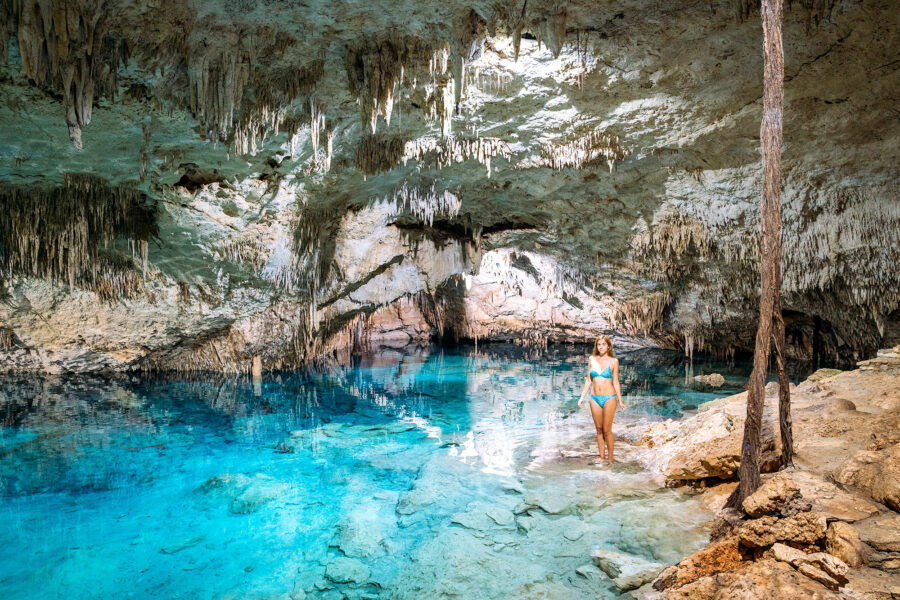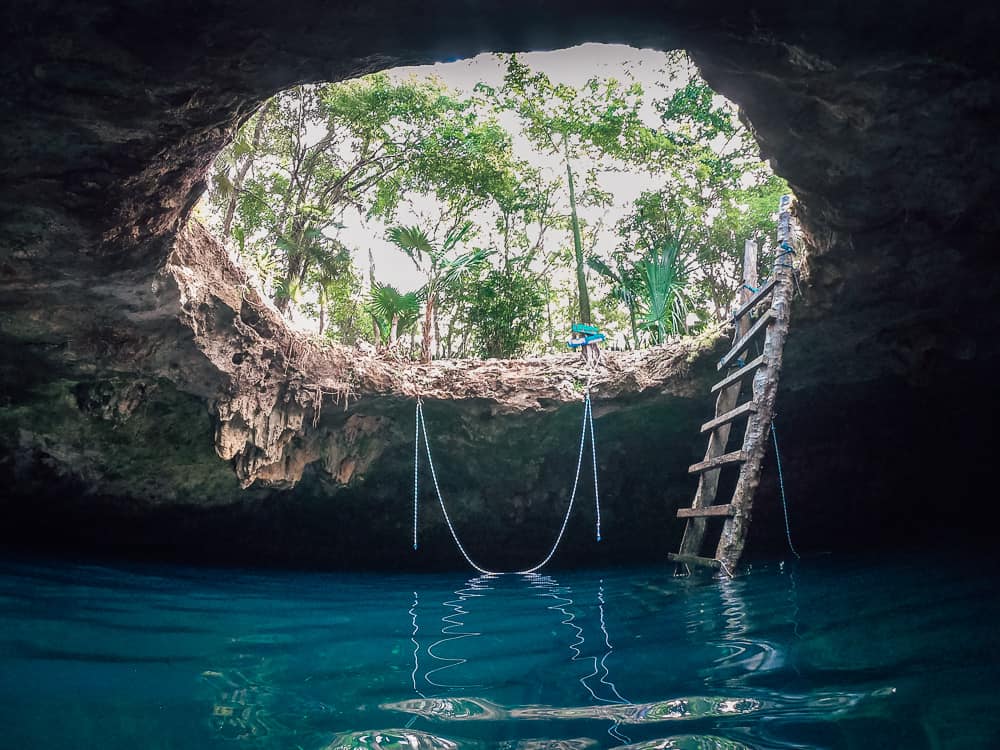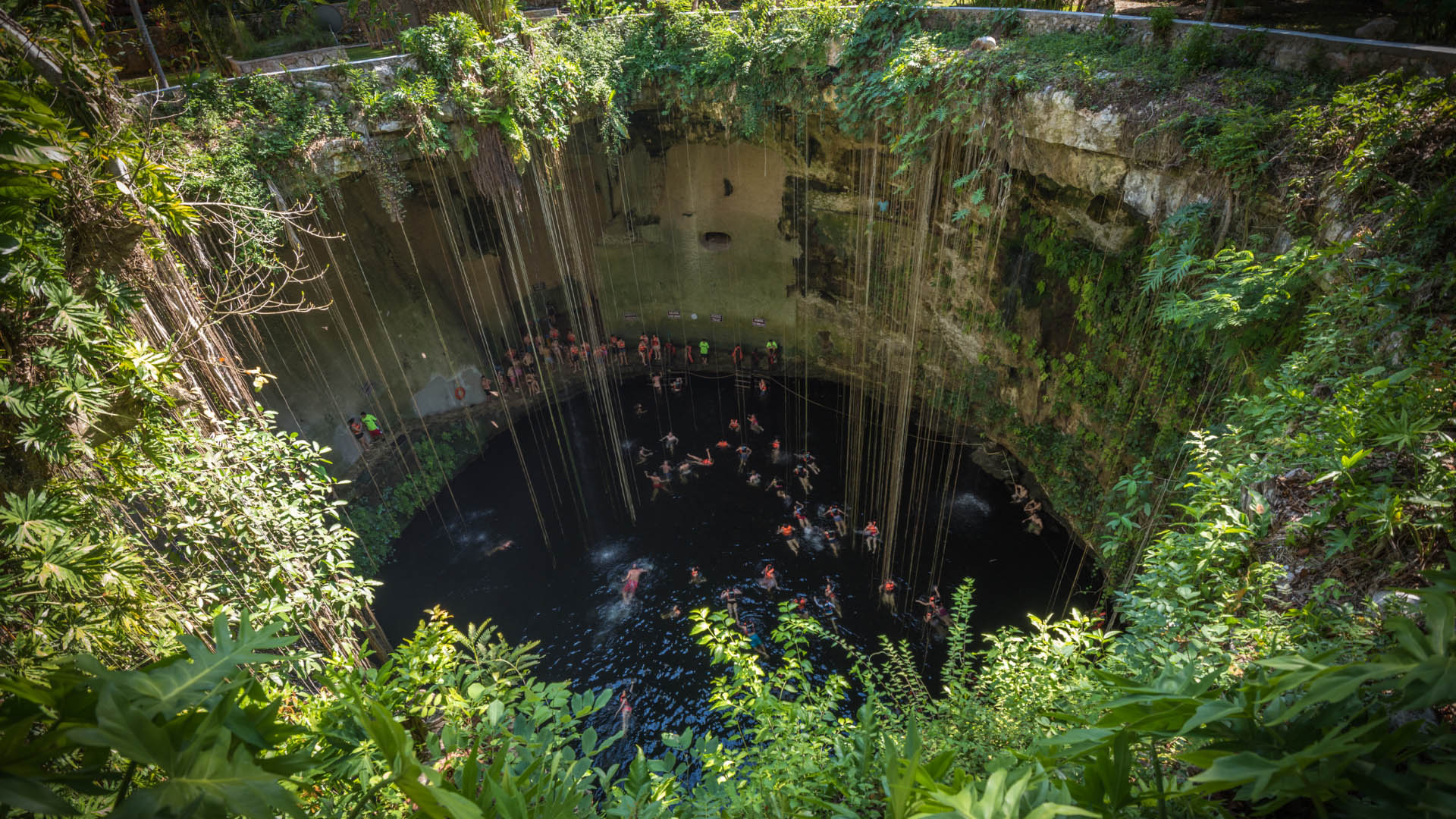Let’s start off with, “What is a cenote?”. Cenotes are sinkholes in the limestone ground, where the roof has caved in. Most cenotes are fed by underground rivers and so they’re filled with freshwater which is very unique itself. This means the water is usually clear, fresh and perfect for swimming in. The word “cenote” (pronounced “say-no-tay”) comes from the Mayan word “dzonot” or “tsonot,” which means “well.” The ancient Mayans recognized the incredible value of these freshwater wells – they could supply the freshwater needs of large cities like Chichen Itza.

Many cenotes were, in fact, considered sacred. They were thought to be the passage to the underworld, where Chac the rain god lived.
The Mayans would offer sacrifices and perform ceremonies at sacred cenotes, asking for rain and good crops. At the most famous cenote in Mexico – the 200-foot wide sacred centre near Chichen Itza – archaeologists have found gold, jade and other precious objects, along with the skeletal remains of over 200 children and adults who were offered as human sacrifices.
Those cenotes viewed as sacred are closed to the public today. No one really knows how many cenote’s in Mexico there are, but according to some estimates, Mexico’s Yucatan Peninsula has over 8,000! There are only about 3,000 registered in total, meaning there are many more to be found!
The Riviera Maya alone has about 300.
If you want to know where the best cenote’s are for tourism or even the secret ones that only locals and expats know about, then reach out to us today!
info@elementsrealestategroup.com

Cost of Cenotes
There’s usually a small entrance fee for cenotes that you can visit independently (ranging from about $2+ to $10 USD). For cenote parks or cenotes where you need a guide, the cost is more.
Note that upon entering, you shower before getting into the water (to remove sunscreen, which can harm the delicate marine life).
3 Types of Centoes
Open cenotes:
Open to the surface, open cenotes look like small lakes with high walls in the middle of the jungle. These are old or mature cenotes, as the cave ceiling has fallen into itself.
They’re great for swimming, kayaking and jumping into (but they don’t have any caves you can explore).

Semi-open cenotes:
Semi-open cenotes have one part open to the sky and another part that’s hidden in a cave.
Cave cenotes:
These cenotes have vertical tunnels open to the surface. You climb down into the cave half-filled with water. Often the ceiling has small holes through which sunbeams shine and sparkle on the water.
Sometimes you can can swim and snorkel through dreamlike subterranean passageways that connect to other cenotes.
As you’d expect, these cenotes are underneath the ground. Only expert scuba divers and cavers can survey these underwater caves and tunnels.
Want to learn more?
Reach out to us today about investing in the Riviera Maya and how you can explore all the centoes whenever you want!














